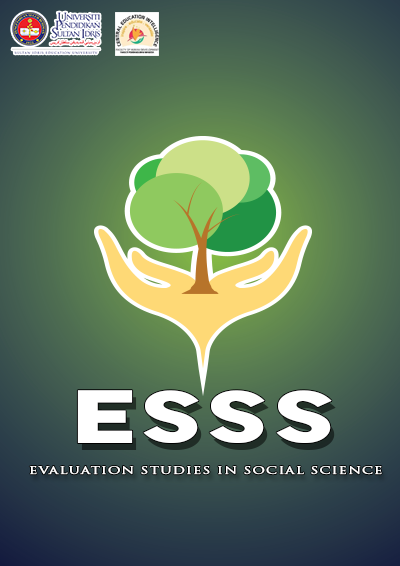Readiness of Mathematics Teachers in Implementing STEM Education
Kesediaan Guru Matematik dalam Melaksanakan Pendidikan STEM
DOI:
https://doi.org/10.37134/esss.vol2.sp.5.2021Keywords:
Teacher readiness, STEM education, knowledge, attitude, teaching experienceAbstract
This study was conducted to identify the readiness of Mathematics teachers in implementing STEM (Science, Technology, Engineering and Mathematics) education in terms of knowledge, attitude and teaching experience. The sample of this study consists of 107 Mathematics teachers from 66 primary schools in Batang Padang district. The data collection process was held through the distribution of questionnaires. Descriptive statistics were used to obtain frequency, percentage, mean and standard deviation. The findings showed that the overall mean value of teachers' knowledge of STEM education was M = 4.16, teachers' attitude towards STEM education was M = 4.80 and teachers' readiness in implementing STEM education was M = 4.72. Next, inferential statistical analysis was used to look at the relationship between mathematics teacher readiness and teacher knowledge, mathematics teacher readiness and teacher attitudes as well as mathematics teacher readiness and teachers ’experience teaching Mathematics subjects. The findings show that there is a significant positive relationship between teacher readiness and teacher knowledge with a value of r = 0.38, there is also a significant positive relationship between teacher readiness and teacher attitude with a value of r =0.55. Meanwhile, teachers 'readiness and teachers' experience in teaching Mathematics subjects did not have a significant relationship and the value of r = 0.00. In conclusion, the findings of this study found that primary school Mathematics teachers in Batang Padang district have the readiness to implement STEM education. Therefore, STEM education can be implemented successfully.
Downloads
References
Abdullah Syukri M. Salleh. (2017). UMT lancarkan modul STEM. Retrieved from http://canselori.umt.edu.my/
Academy of Sciences Malaysia. (2015). Science Outlook 2015: Action Towards Vision. Kuala Lumpur, Malaysia: Author.
Aini Aziziah Ramli, Nor Hasniza Ibrahim, Johari Surif, Muhammad Abd. Hadi Bunyamin, Rahimah Jamaluddin & Nurdiana Abdullah (2017). Teachers readiness in teaching STEM education. Man In India, 97 (13): 343-350.
Aiken, L. R. (1976). Update and other Affective Variables in Learning Mathematics. Review of the Educational Research, 46: 293-311.
Ajzen, I. (1988). Attitudes, personality and behaviour. Illinois: Dorsey Press.
Alves (2016). Teacher’s experiences in PBL: implications for practice. European Journal of Engineering Education. https://doi.org/10.1080/03043797.2015.1023782
Amelia Adam, (2019). Cabaran pengintegrasian pendidikan STEM dalam kurikulum Malaysia. Seminar Wacana Pendidikan 2019 (SWAPEN 2.0).
Becker, K., & Park, K. (2011). Effects of integrative approaches among science, technology, engineering, and mathematics (STEM) subjects on students’ learning: A preliminary meta- analysis. Journal of STEM Education. https://doi.org/10.1037/a0019454
Boset, S. A., dan Asmawi, A. (2020). Mediating effect of work motivation on the relationship between competency and professional performance of EFL teachers. Akademika, 90(1): 23-33.
Bunyamin, M. A. H., & Finley, F. (2016). STEM education in Malaysia: Reviewing the current physics curriculum. Kertas kerja pembentangan dalam International Conference of Association for Science Teacher Education (ASTE), 7-9 Januari, Nevada, Amerika Syarikat.
Bryman, A. dan Cramer, D. (1999). Quantitative data analysis with SPSS release 8 for window: A guide for social science. London and New York: Routledge.
Chua, Y.P. (2006). Kaedah dan statistik penyelidikan: Asas statistik penyelidikan. Buku 2. Kuala Lumpur: McGraw-Hill (Malaysia) Sdn. Bhd.
Curriculum Development Centre. (2016). Implementation guide for science, technology, engineering, and mathematics. Ministry of Education Malaysia.
Davis, F.D. (1989). Perceived usefulness, perceived ease of use and user acceptance of information technology. Mis Quartertly, 13 (3): 319-339
Fullan, M. (2001). The new meaning of educational change. Edisi ketiga. London: Rouledge Falmer.
Hidayatul Illah Ahmad Saad, & Rabiatul Adawiah Ahmad Rashid. (2020). Persepsi guru terhadap pendidikan STEM di peringkat pra universiti. Journal of Educational Research and Indigeneous Studies, 1(1).
Johnson, C. C., & Sondergeld, T. A. (2016). Effective STEM professional development. Dalam C. C. Johnson, E. E. Peters-Burton, & T. J. Moore (Eds.), STEM road map: A framework for integrated STEM education (pp. 203-210). Routledge Taylor & Francis Group.
Krejcie, R. V., & Morgan, D. W. (1970). Determining sample size for research activities. Educational and Psychology Measurement, 30, 607-610.
Nor Azlina Ahmad. (2015). Kesediaan guru dalam pendidikan integrasi science, engineering, technology and mathematics (STEM). Thesis, Universiti Sains Malaysia.
Noraini Idris. (2010). Penyelidikan dalam pendidikan. Kuala Lumpur: McGraw-Hill (Malaysia) Sdn. Bhd.
Noraini Idris. (2019, 18 Mar). Experts: Fewer STEM students will affect nation’s talent pool. The Star Online. Diperolehi daripada https://www.thestar.com.my/news/nation/2019/03/18/experts-fewer-stem-students-willaffect-nations-talent-pool
Roehrig (2012). Is adding the E enough? Investigating the impact of K-12 engineering standards on the implementation of STEM integration. School Science and Mathematics, 112(1): 31-44.
Shai’rah, N. (2015). Kesediaan guru melaksanakan pengajaran dan pembelajaran pendidikan STEM. Fakulti Pendidikan, Universiti Kebangsaan Malaysia.
Thomas, T.A. (2014). Elementary teachers’ receptivity to integrated science, technology, engineering and mathematics (STEM) education in the elementary grade. Tesis Ph.D. University of Nevada, Reno.
Weirsma. W. (2000). Research Method in Education. Needham Heights, MA : Pearson Education.
Yusof (2012). communicating change: the five sentiments of change perspective. Jurnal Pengurusan, 35, 87-96.





